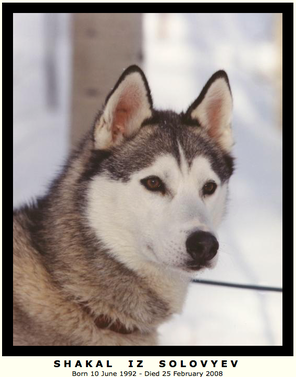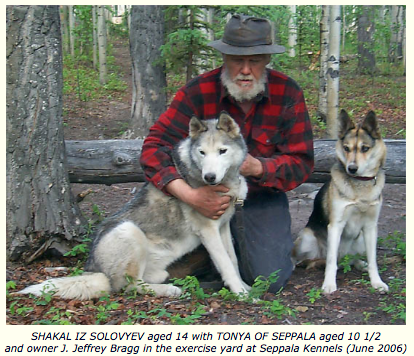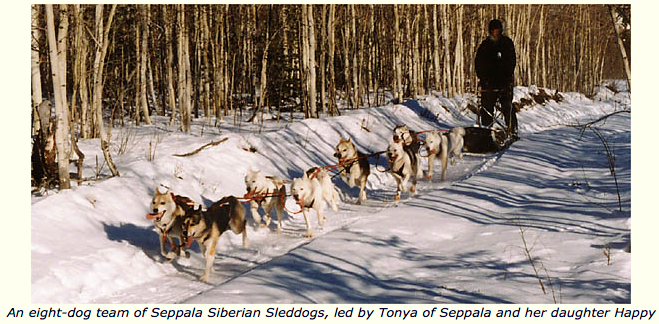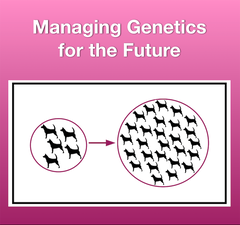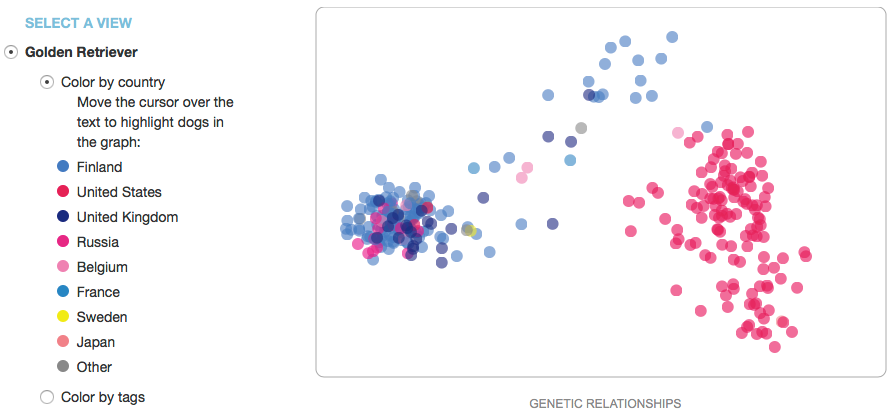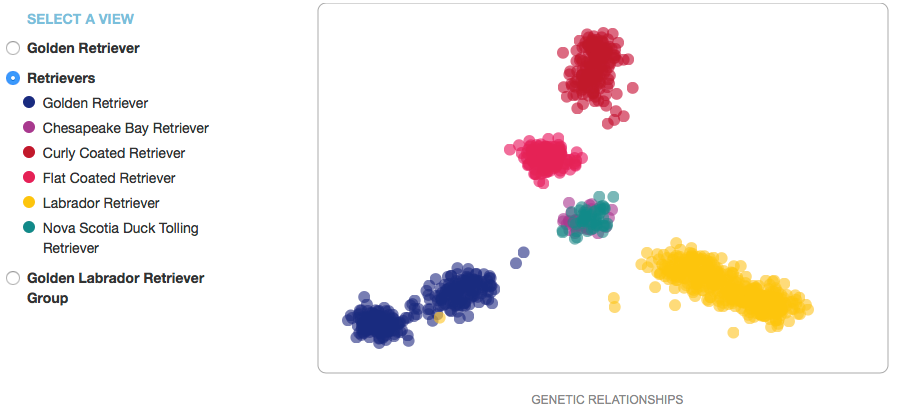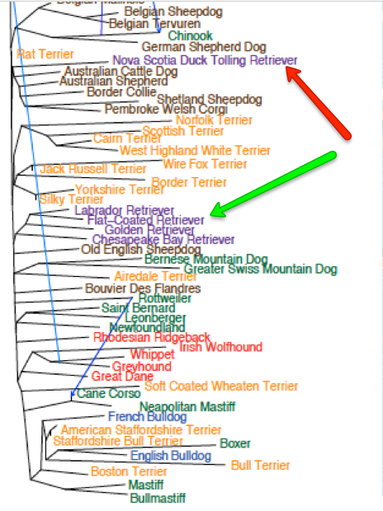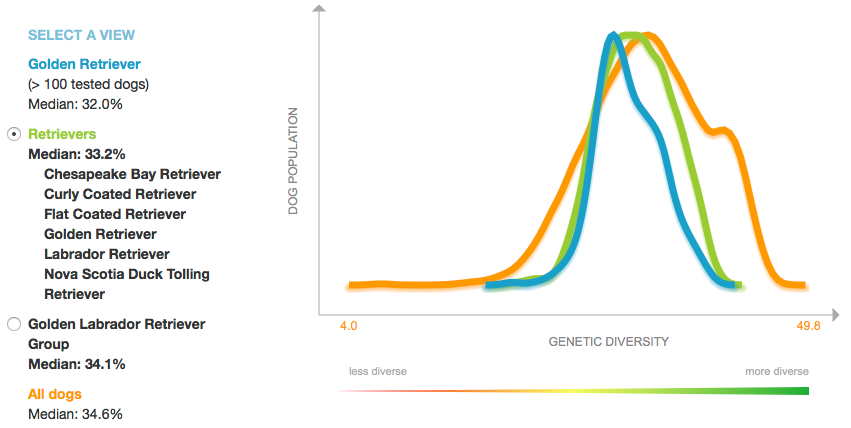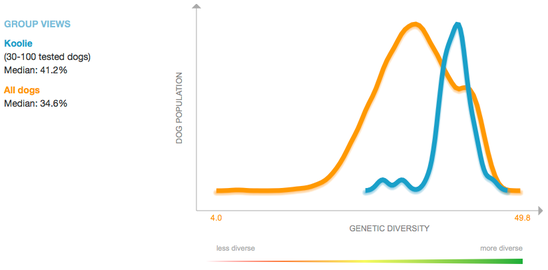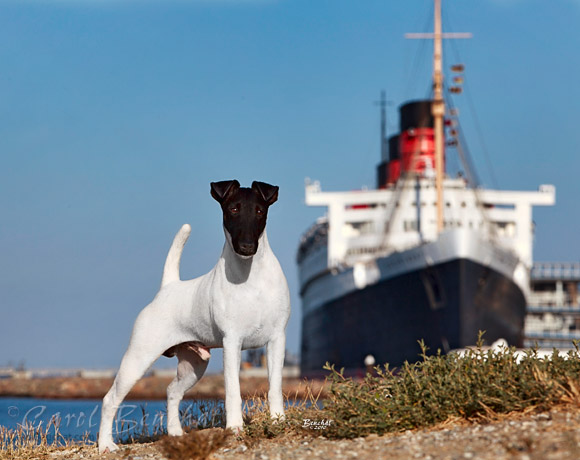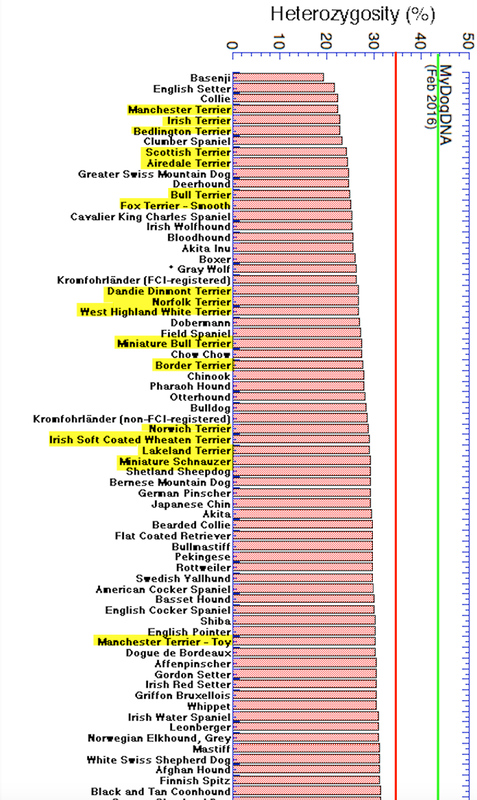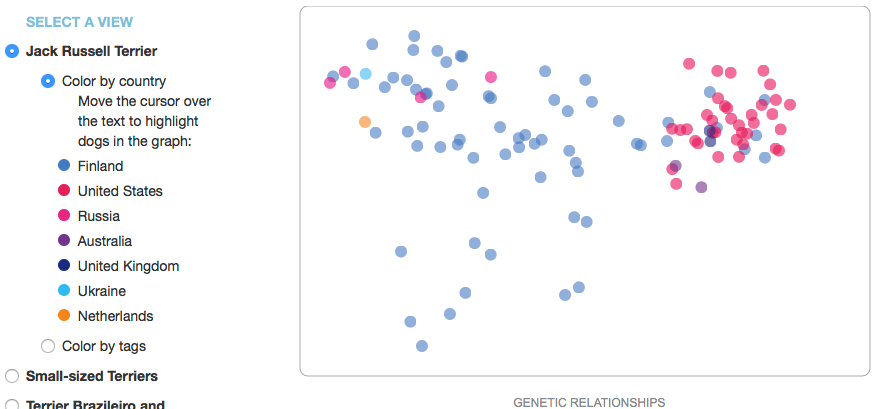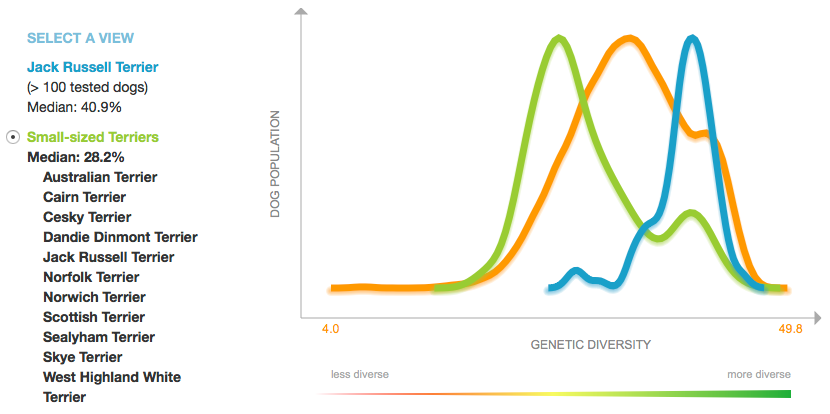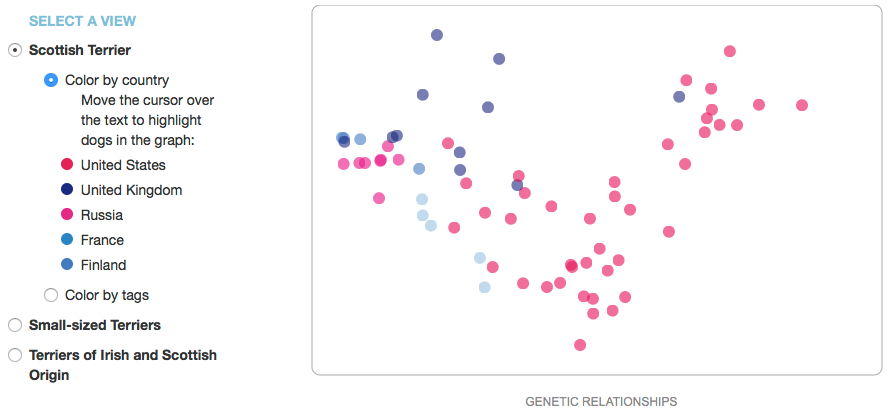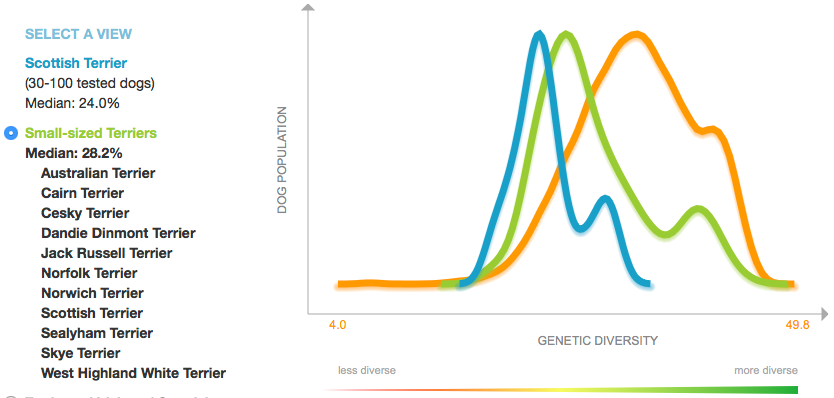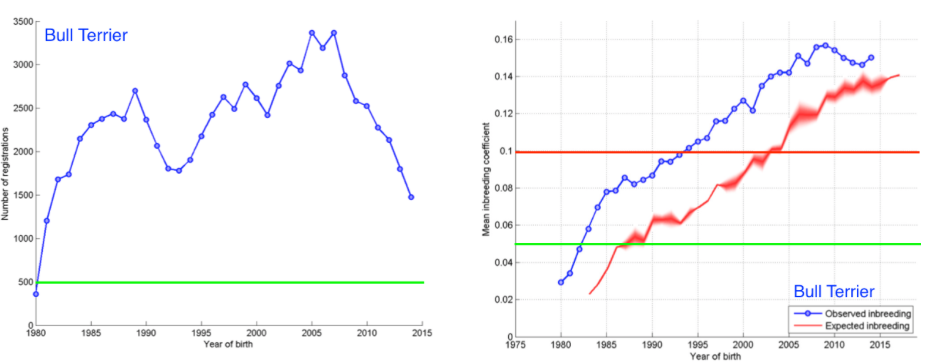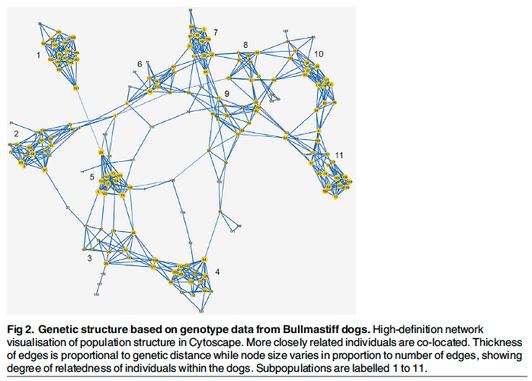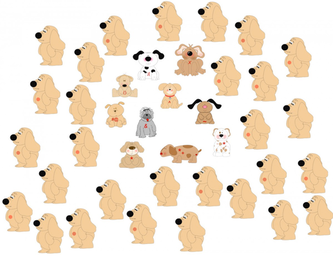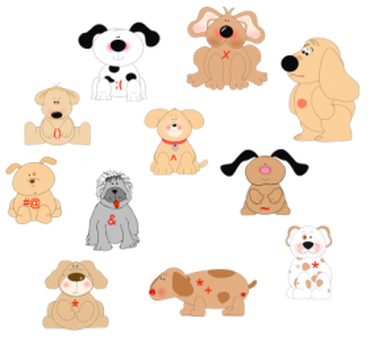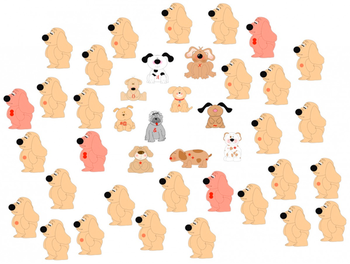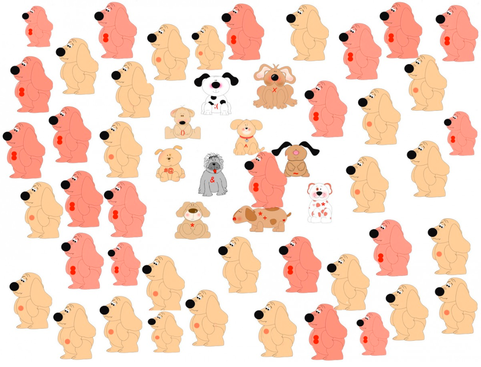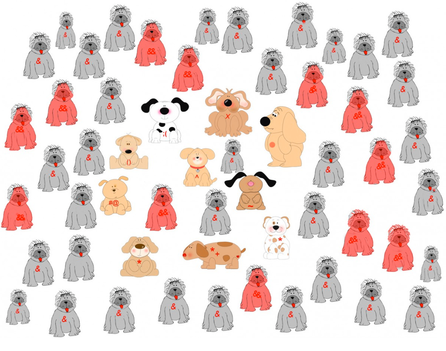The Seppala story is fascinating and worth a visit to the Seppala Kennel website. But there is also a collection of articles by Bragg that should be required reading for anybody who aspires to produce dogs that are beautiful, functional, and sound in mind and body for generation after generation. That Bragg has preserved the legacy of these dogs and successfully implemented sound breeding practices is evidenced by the dogs he produces, which are working sled dogs that routinely live well into their mid-teens. I think so highly of the knowledge he has to offer that I have compiled his collected articles into a single document, which you can download from the ICB website under "Resources: Essential Reading" (or more conveniently from here).
I have copied for you below what I think is the most valuable of his essays, because it is simple and to the point. If you grew up learning how to write with Strunk and White's Elements of Style under your arm, you will appreciate how a few pithy statements can have a far greater impact than pages of prose ("Omit needless words!"; "Use active voice!"). Bragg provides the details here, but he encapsulates the essence of his points very simply:
- Maintain balance of sires and dams
- Eschew incestuous matings
- Understand and monitor coefficient of inbreeding
- Pay attention to the trend in COI
- Calculate number of unique ancestors
- Know the genetic load but don't obsess about it
- Use pedigree analysis
- Conserve sire and dam-line diversity
- Practise assortative mating
- Maintain high generation time
- Avoid repeat breedings
- Ensure sibling contribution
- Monitor fitness indicators
- Attempt founder balancing
- Consider outcross matings
- Monitor population growth
- Seek balanced traits
- Avoid unfit breeding stock
- Avoid reproductive technology
- Restrict artificial selection
Sit down with a cup of tea, Bragg's essay, and a highlighter. This is the syllabus for a graduate degree in dog breeding. Most of what I have said in my dozens of blog posts is communicated here in a document you can read from end to end in ten minutes. Read it, then read it again. Absorb the lessons. These are simple truths that will make you a more successful breeder if measured by the soundness, health, and happiness of the puppies you produce.
Population Genetics in Practice:
Principles for the Breeder
| At the present time, after twelve or fifteen years of existence of the canine diversity movement, most available discussions of dog breeding as a discipline still recommend linebreeding (a euphemism for inbreeding), breeding only "the best to the best," together with stringent artificial selection and multiple screening for genetic diseases. That is still the old way. Those are the methods that brought genetic crisis to the world of purebred dogs in the first instance. Two and a half years ago on the Canine Genetics email list, I asked whether we could not collaborate to write down a set of rules, guidelines or principles aimed at breeding according to the principle "primum non nocere" -- "above all, do no harm!" Although a few people acknowledged the desirability of such a document, we never managed to mount a thorough discussion of which principles should be included. In the end I drew up my own provisional list of principles for 21st- century dog breeding, which I never published as I never was able to put it into a final form that I thought adequate. |
Meanwhile the exigencies of the Seppala Siberian Sleddog Project (a Canadian bloodline conservation and breed development initiative under Ministry of Agriculture charter) required that I "wing it" as best I could, creating for purposes of the Project a coherent body of breeding practices for conservation and development of the Leonhard Seppala sleddog strain. Lacking time to make extensive research of other rare or developing breeds, I worked mostly from my own knowledge of population genetics, within the parameters of our evolving SSSD breed, with relatively little light shed on our problems by the practices of other breeders in similar situations.
Not every breed may be in a position for its breeders to do some of the things we do in the SSSD Project -- breeders of Chinooks, for example, cannot avail themselves of landrace stock from the "country of origin" of their breed, both because the breed is synthetic in origin and because its original component canine strains are not completely known. With the strong caution, then, that not every single measure here recommended may be possible or appropriate for all other breeds, for every situation, or for any given breed other than the Seppala Siberian Sleddog, I offer for consideration the following guidelines drawn from my own limited knowledge and experience.
Maintain Balance of Sires and Dams
Breeders should make a great effort to maintain a reasonably equal numerical balance of sires and dams; it is unwise consistently to use fewer individual sires than dams. The so-called "popular sires" syndrome, in which a small number of elite show or trial winners sire grossly disproportionate numbers of progeny in a breed population, has received much discussion and attention. What may not be so well realised is that this selfsame syndrome is repeated in miniature in most kennels, where one or two of the "best" males cover all the bitches, sire all the litters. (How often has one heard it put forth, and not only by novices, that "the best males should sire all the litters!") Any significant imbalance between the number of sires and dams automatically restricts the effective breeding population. In order to avoid such needless reduction, just as many individual males as bitches should contribute to the population; this holds true whether we speak of the breed population as a whole, or of the population within a single kennel.
As controversial as this advice may still be, I nevertheless advise the breeder to do no incest breeding whatsoever (even if you would rather call it "linebreeding" or inbreeding). Just about all purebred dog breeds demonstrate serious and sustained inbreeding when the full known pedigrees are considered. There is little excuse for inbreeding to be continued in the first four generations of pedigree if it can possibly be avoided. Matings of related individuals closer than cousins ought never to be contemplated unless that should become absolutely necessary to prevent loss of a rare bloodline. That means: (a) no brother/sister matings, (b) no father/daughter or mother/son matings, (c) no half-brother/half-sister matings (i.e., sire and dam share one parent in common), (d) no grandsire/granddaughter or grandson/granddam matings, (e) no uncle/niece or nephew/aunt matings. Why should a practice universally decried with respect to our own species be so common in dog breeding? The principles of genetics are the same no matter whether humans, dogs, or other species are considered.
That does not mean that first-cousin matings (sire and dam have different parents but the same grandparents) are okay or recommended, either; it is simply a case of having to draw the line somewhere, at a given degree of consanguinity, in order to say "anything closer than this is quite beyond the pale and should not even be considered." (Otherwise excuses will inevitably be found even for full-sib -- brother/sister -- matings.) If the available pedigree diversity within your own breed allows you to draw the line further out, so much the better.
Inbreeding cannot be practised with impunity, without consequences. Inbreeding depression may not be dramatically visible to most breeders, but that is only because it is subtle, incremental and widespread. It is a proven fact that longevity, reproductive success, and the immune system are all negatively affected by even "moderate" degrees of inbreeding. Survival fitness has already been compromised in many breeds. For breeders blindly to continue down the path to destruction whilst telling themselves that they are merely "fixing type and exposing undesirable recessives" is inexcusable.
Understand and Monitor Coefficient of Inbreeding
To avoid frankly incestuous matings within the first three generations of pedigree is not sufficient in and of itself. The Coefficient Of Inbreeding (COI) must also be monitored, preferably over ten generations of the known pedigree, with a view to keeping it as low as possible. To calculate COI over more than two or three generations requires the use of computer software such as CompuPed, Breeder's Assistant, BreedMate, FSpeed, etc., in conjunction with a reliable breed database. It cannot be done easily or accurately without computer assistance; fortunately a good number of applications are available that meet the purpose.
These days every breeder should understand clearly what Coefficient of Inbreeding is and just what it tells us. Unfortunately that is still far from the case. Wright's Coefficient of Inbreeding (the only scientifically acceptable version, though there is at least one specious version in popular use) represents the statistical probability that the alleles contributed by sire and dam at any given gene locus will be identical by descent . It may also be regarded as the percentage of multi-allele genes that are likely to be homozygous by descent for a particular mating. Therefore COI is the principle measure of the degree of inbreeding and its effects on the genome.
To calculate a four to six generation COI only gives a false sense of security; usually such a COI fails to tell the whole story and the ten-generation COI will be found to be dramatically higher. Many popular writers, of whom Dr. Malcolm Willis is probably the best known, speak as apologists for inbreeding at one moment, at the next moment attempting to assure us that the average COI in most breeds is quite low. That is simply not the case. In the first place, a true average COI for an entire breed is not easy to determine. People assume that such things are known, but they are not, because the requisite research simply has not been performed. But the assertion that the COI in an "average pedigree" is something on the order of four to six percent is ludicrous, something that can be disproven readily by anyone with a breed database and one of the above mentioned pedigree software applications. The four to six percent contention, when examined, will usually be found to be supported by pedigrees of four or five generations only. Such calculations fail to take into account the background inbreeding inherent in the breeding history of every dog breed; ten generations is the generally accepted standard for comparison. In some breeds even ten generations may not tell the complete story and whole-pedigree COI will need to be examined before breeders can truly know where they stand.
Another specious argument often voiced is that "inbreeding should be defined as any mating in which the COI is higher than the overall average for the breed." This is an unscientific and somewhat circular definition. It is ridiculous on the face of it, as COI is not a static measurement but a dynamic one, a new story each time a new sire is mated to a new dam. As mentioned, the average for most breeds is not known. Moreover, distinctly different "average" levels may obtain in different sectors of some breeds (as, for example, show dogs, working dogs, and pet stock). In any case, inbreeding is never defined by reference to a population; it is always a function of the relationship between the sire and the dam of a litter or an individual. Inbreeding exists when genes held by both the sire and the dam of a litter are identical by descent. It is certainly a truism that all present-day dog breeds are "inbred," or, more accurately, that inbreeding has occurred consistently throughout their history. That is why we have acute problems with genetic diseases in our dogs. For that very reason, one of our major objectives ought to be to lower the average COI of every breed by reversing the inherent bias of our present system towards inbred matings. But to speak of an "inbred population" is at best shorthand. Inbreeding has meaning only with reference to a specific mating. It results in an increase in homozygosity (and a corresponding decrease in diversity) which is the permanent effect of the inbreeding.
In a purebred dog breed COI can hardly be too low; almost always it is far too high! It is safe to say that most breeders are totally unaware of their own dogs' Coefficients of Inbreeding. Ignorance is no excuse. COI is the best tool the breeder has to assist in the conservation of genetic diversity. Without it he stumbles in the dark down the slippery slope to canine genetic depletion.
Pay Attention to the Trend in COI
It is impossible to recommend an arbitrary figure for maximum allowable percentage COI, as the situation of each breed is likely to be different. Probably anything greater than 5% constitutes a threat to genetic health, yet to set the bar at 5% would be virtually impossible in many breeds. It is easy to point to specific individuals in numerous breeds with COIs of 70% or more, but in many breeds it would be a real challenge to discover examples of less than 5% COI. There are breeds in which breeders would have to make great efforts to obtain COIs as low as 20%; in at least a few breeds 20% would be alarmingly and needlessly high.
Breeders should at least endeavour to grasp what the average 10-generation COI level probably is for their breed, at any rate in bloodlines with which they are familiar, and to seek to keep their own breeding well below that level! Otherwise the COI will continue to increase indefinitely, steadily, year by year.
One should take care that the COI trend in one's own breeding is never upward, but always either downward or at worst neutral. This is done by averaging the individual COIs of sire and dam (add the sire's COI to the dam's COI and divide by two) and then comparing this average with the COI for the trial mating or litter that would result from mating those two individuals If the litter COI is higher than the average of the parents, then obviously you are increasing the overall level of inbreeding by performing that mating; ordinarily the greater the positive disparity between the two figures, the more the mating should be deprecated. (This rule of thumb has distinct limitations, though. When a low-COI bloodline or a frank outcross is being integrated with an existing high-COI bloodline, it may still be quite desirable to perform matings in which the mating COI exceeds the parental average, since the end result will still be a desirable increase in diversity for the high-COI subject bloodline.) Conversely, a litter COI lower than the parental average is desirable. As far as I know, despite some claims to the contrary, there is no danger in an abrupt decrease in litter COI from parental levels.
You may also wish to look at the same data from a different perspective by calculating (with the same pedigree software) the Coefficient of Relationship (RC) when examining trial matings, the more easily to ascertain which of two or more alternative matings has the least-related parents.
Calculate Number of Unique Ancestors
A deep and reliable breed database, used in conjunction with a pedigree and COI application such as Breeder's Assistant or BreedMate, is a basic tool to explore COI and trial matings. That is far from its only use, though. The database and pedigree application should also be used to study the number of unique ancestors in the known pedigree. By that I mean the number of actual individual dogs showing in the full pedigree, as against the number theoretically possible in each generation; invariably the number of actual ancestors will be radically smaller than the number theoretically possible. Next you should determine the number of ancestors in common between sire and dam, and finally the number of ancestors unique to each parent. These figures are useful to assess the potential diversity of a projected mating and will tell you more than the simple COI (which, after all, is only a percentile probability figure predicting the likelihood that alleles at the same gene locus contributed by the sire and dam will be identical by descent). One of the best guides to the probable genetic diversity available in any particular mating is the number of ancestors not common to both parents. You will find that this tool dramatically points out genetically impoverished matings, and conversely that it easily isolates matings that are markedly superior from a diversity standpoint. This technique is one of the most valuable tools in actual practice, yet few make use of it.
Actual numbers of unique ancestors will vary from one breed to another, particularly in response to the depth of known pedigrees. It is of little use without a complete breed database; pedigrees in which some lines have not been researched beyond the usual four generations will distort results.
Know the Genetic Load but Don't Obsess About it
By "genetic load" we mean the total complement of genes within a population that can negatively affect the fitness of individual animals. Some of these genes are known; many remain poorly understood or unknown. The breeder should at least be well aware of genetic problem areas within the breed. Some will be breed-specific (syringomyelia in Cavalier King Charles Spaniels, the purine metabolism defect in Dalmatians); more will be common to most or all canine breeds (epilepsy, canine hip dysplasia) but in some breeds may be associated with particular bloodlines.
Breeders are told that to produce animals with genetic defects marks them as "bad breeders," so they tend not to share information about such defects. They are also told that their objective should be to "eliminate" these genes, which is used as justification for inbreeding and expensive screening programmes. This kind of advice builds up an obsessive attitude towards genetic load. People spend endless time discussing specific defects, individual animals, screening programmes and the like, whilst ignoring the true causes of genetic disease.
It is unlikely that canine genetic load can be effectively eliminated, at least at the present stage of genetic knowledge. Not until the functions and interactions of all genes in the dog genome are fully known, and gene surgery commonplace, would that become a real possibility.
It is therefore important that breeders share knowledge about genetic load within their breeds, so that they can avoid unfortunate breeding combinations. Authors such as Malcolm Willis and Jerold Bell insist that outbreeding "covers up" recessive defects. Indeed it does and indeed it should! That is exactly what nature itself does, and no one criticises natural evolutionary processes or recommends that natural populations should be inbred instead of mated naturally. The fact that inbreeding "exposes" recessives is not necessarily helpful, because in most cases it is impractical to remove or "eliminate" the "defect" genes. Rather, breeding should be guided in such a way as to avoid reinforcement of known recessives whilst maintaining genetic diversity in the population.
Screening and selection can never succeed as a strategy for the "elimination" of genetic disease. As one defect is eliminated, others will be reinforced, and the latter state of the breed will be worse than the former. The genetic load must be known, tolerated and managed; to obsess about its elimination will lead only to disaster.
Use Pedigree Analysis
Every breeder should also carry out in-depth pedigree analysis for each prospective mating, listing the major ancestors on which inbreeding occurs in that mating, noting the number of occurrences and the generation number of each occurrence. This analysis should be carried back for at least six ancestral generations, ideally for eight. This practice will alert the breeder to undesirable "pile-ups" on key animals and therefore to potential genetic problems (where these are known to be associated with such individuals) in the planned mating. This can be done entirely without computer software. However, an alternative or supplementary approach is to use the "percentage blood" function of pedigree software such as Breeder's Assistant. The percentage blood function, in contrast to COI, illustrates just where in the pedigree major inbreeding problems may be occurring, whether just in a handful of key animals, or more broadly throughout the entire pedigree.
Conserve Sire and Dam-Line Diversity
There are two unique points of canine pedigree diversity that are not always paid much attention. These are the topmost and bottommost lines of the pedigree -- the tail-male or sire-line and the tail-female or dam-line. They represent unique genetic content, held by the mitochondrial DNA and the sex chromosomes, much of which is transmitted only by those pedigree lineages. Given the intense preoccupation among breeders with both stud dogs and brood bitches, what I am going to say may seem surprising: diversity in sire and dam lines is often quite scarce in purebred dog genomes.
In the case of the Siberian Husky (one of the breeds most familiar to me) there are two major founder sire-lines and two major founder dam-lines, along with perhaps one or two others that are well on the way to extinction. I have every reason to believe that most other breeds are in similar case, due largely to hazard, simple chance. Since these lines are not consistently scrutinised and conserved by breeders (because they are unknown if the breeder has not researched the pedigree all the way back to breed foundation), they are subject to changes in the frequency of their occurrences, exactly similar to the changes in gene frequency that occur due to random drift. Most breeds begin with a fair number of unique sire and dam lines. But some drift into prominence and others into obscurity, scarcity, and finally extinction.
These lines are important, particularly the dam-line with its association with mitochondrial DNA. This kind of DNA is held outside the cell's nucleus, in the cell mitochrondria within the cytoplasm. Since the spermatozoon has no mitochondria it plays no part in the transmission of mitochondrial DNA, which is inherited only from the dam. Mitochondrial DNA is directly involved in energy metabolism and is therefore vital to performance in working dogs.
The breeder should know the available unique sire and dam-lines in her breed and within her own kennel, and should make every effort to conserve them. That means ensuring that the sons of sires contribute to the next generation, likewise the daughters of dams. It is all too easy to neglect this vital point. Loss of tail-male and tail-female lines within kennels leads quickly to their loss within breed populations.
Practise Assortative Mating
If the breeder should wish to emphasise or fix greatly desired traits, she should consider the use of assortative mating (mating unrelated parents who are phenotypically similar for the desired traits) instead of inbreeding. Assortative mating is much less dangerous than inbreeding and will accomplish much the same ends. It should be obvious that to breed "like to like" for given desired traits will tend to yield more of what is desired, but if the parents are not closely related, there is a greatly reduced chance that other unconsidered traits will be unknowingly reinforced by such matings.
Maintain High Generation Time
Genetic losses occur infallibly with almost every generation of purebred dogs. This happens through a variety of causes -- random drift, from too few progeny contributing to the next generation, from the inbreeding/selection cycle, bottlenecking, etc.. For that reason, the fewer the intervening generations between foundation stock and current stock, the less genetic diversity is lost. Breeders should therefore maintain a high average generation time (age of the sire at mating plus the age of the dam at mating, divided by two) for each litter produced: four years should be considered an appropriate minimum floor level, five or six is better. It is helpful to calculate a running average generation time for your kennel throughout its history, by keeping a grand average of the average generation times of all litters produced.
Far too little attention is paid to generation time by breeders. Many flagrantly disregard the question. How often have we seen the bragging advertisements in dog magazines: "CHAMPION (subject to CKC confirmation) Frou-Frou, finished from puppy classes at 10 months! Offered at stud to approved bitches only. Puppies from Ch. Frou-Frou are eagerly awaited next month!" The dog that is capable of finishing a title at ten months of age may turn out to be anything at all when mature; to mate such a dog at less than one year of age is breeding blindfolded. Often serious genetic diseases do not manifest until three or four years of age. To maintain a high average generation time gives the breeder a distinct advantage when it comes to producing healthy stock, and makes breeding results more predictable, as well as minimising generational losses of genetic diversity.
Avoid Repeat Breedings
Many kennels make a routine practice of repeating favourite breedings over and over again. Do not always use the same sire for a particular bitch (or vice-versa)! Take care to maintain diversity in your matings. Endless repetitions of the same matings greatly reduce the available breeding combinations both within the individual kennel as well as for the breed at large. This principle would seem quite obvious on the face of it, yet how many people ignore it as soon as they find a "nick"!
Ensure Sibling Contribution
The breeder should strive to ensure that at least two of every litter (unless it should happen to be one of those litters that really had best be forgotten) contribute to the next generation; half the litter should be the ideal, though perhaps a difficult one to maintain. In every instance in which only one progeny from a given mating contributes to the next generation, automatically and infallibly half of the available genetic diversity in that line is lost permanently! If two progeny contribute the theoretical average loss is reduced to 25%, still less if more littermates contribute. This single point is a major source of losses of genetic diversity among purebreds, yet it often goes totally unconsidered by the breeder.
Monitor Fitness Indicators
Breeders should not fail to monitor key indicators of survival fitness in their canine stock. These are nestling viability, absence of stillbirths, birth weights, fertility (percentage of successful matings), fecundity (average litter size compared to the norm for your breed), survival to adulthood, and longevity; be sure that your breeding programme does not trend toward the reduction of any of these.
Attempt Founder Balancing
It may be valuable to attempt to balance the relative contributions of founders (where possible and appropriate), particularly subsequent to founder events or genetic bottlenecks. This is routine practice in zoological park captive-breeding programmes, yet virtually unheard of in a canine context. "Founder" is a not an absolute, but rather a relative term. If a breed has a long pedigree history with original breed foundation stock at thirty or more generations remove from current stock, it may well prove impossible to balance the contributions of the original breed founders, whose relative contributions may already be set in stone for all practical purposes. But founder events tend to occur repeatedly within the history of a breed, not only when the stud book is first opened. Bottlenecks occur with dismal regularity. At least the breeder can pay attention to the most recent founder set that is clearly identifiable, attempt to prevent the loss of individual bloodlines that are seriously under-represented, and seek to balance the relative contributions. Clearly this is no simple matter and to suggest that it be applied consistently may be a counsel of perfection. At least it is one more possible tool in the breeder's armoury against diversity losses.
Consider Outcross Matings
The great majority of dog breeds have been bred within a completely closed studbook for sixty to a hundred years or longer, with little or no fresh genetic input throughout the entire period from breed foundation to the present. In most cases the stud book was opened for a year or two, a small number of founders, often closely related to one another, were registered, and the stud book was then closed. Thereafter, only dogs descended from the founders could be registered. And for those sixty to a hundred or more years, artificial selection, random drift, bottlenecking and other forms of attrition took their toll of whatever genetic diversity was present in the founder group. It is exactly as though a bank account had been established with a single initial deposit (the genetic diversity of the founders), with no further deposits permitted; meanwhile bank fees and direct debits (diversity losses from drift, selection, etc.) chiselled away at the balance. It is a sure and certain recipe for bankruptcy.
Similarly, many individual bloodlines have been treated in exactly the same way, bred in relative genetic isolation from other bloodlines -- except that in this case additional deposits are at least allowed, in the form of bloodline outcrosses. Therefore each breeder probably ought to consider the desirability of locating and using a true outcross within his or her own breed (unrelated to one's own stock for at least ten to fifteen generations) at least once and to integrate the resulting progeny into one's kennel bloodline.
This cannot be done uncritically, outcrossing just for the sake of outcrossing. Some bloodlines might be an outcross to your own line, yet be worthless for the purpose. Generally, lines that come from the same ultimate foundation, but contain less diversity because they have been bred in a closed stud book for more generations, or have been heavily selected for cosmetic traits, will tend not to yield useful results.
If there is any possibility whatsoever to import unrelated stock from a breed's country of origin, one ought seriously to consider doing just that. This is mainly possible in the case of landrace breeds, in which an autochthonous regional population remains in the country of origin, independent of exported stock that may have become a registered breed in other countries. Examples of such situations would be the population of desert-bred coursing sighthounds in the Near East, relative to the Saluki breed in Europe and North America, or the relict populations of autochthonous arctic spitz-type sled dogs relative to the modern Siberian Husky, Alaskan Malamute, Samoyed, et al.
It would be difficult to overestimate the genetic value of a single import animal, unrelated to the registered breed population for scores of generations but stemming from exactly the same fountainhead. This I would term the Holy Grail of the diversity breeder -- the ideal controlled-outcross situation in which an immediate significant increase in healthy genetic diversity may be obtained at little to no cost in terms of breed type and purpose. (That the Canadian Kennel Club rejected this option for the Siberian Husky in 1994 demonstrates, I believe, the true extent to which the umbrella all-breed registries represent an obstacle to genetic health and true breed welfare and improvement.)
In cases of small, highly-inbred populations for which there is no landrace resource, it may become necessary to consider an outcross or outcrosses to similar breeds to relieve inbreeding depression and restore healthy genetic diversity. If so, this ought to be faced squarely and proactively by the breed club concerned and breeding subsequent to the breed outcross should probably be a collective endeavour, shared for purposes of more thorough integration and to reduce the work-load on any one breeder -- because, no question about it, the integration of a breed outcross is a major task that can hardly be undertaken alone by the average breeder. (The Backcross Project in the Dalmatian breed was an excellent example of a breed outcross well-purposed and superbly integrated; but the reaction of the breed club was deplorable.)
Monitor Population Growth
In the case of small, developing breed populations, it should be regarded as important to monitor and control the growth in number of the population such that there is steady expansion of the population within the limits of breeders' kennel capacity and the demand for progeny. Growth by fits and starts, with periods of rapid overexpansion followed by sudden cutbacks or population collapse, is very bad for genetic health. It is difficult to impossible wholly to avoid population bottlenecking, but its existence and ever-present threat should be recognised. To whatever extent may be possible, breed clubs and individual breeders should do what they can to ensure smooth, steady population expansion and to minimise cutbacks and consequent genetic bottlenecking.
Seek Balanced Traits
One ought always to evaluate breeding stock for balanced characteristics: health, vitality, temperament, working ability, intelligence, structure, type. Breeders should aim to maintain the balanced characteristics of a total dog, not just to produce winners at dog shows, field trials, races, etc. An all-round, balanced dog will be a much better hope for the future than a highly-selected, over-bred animal thought to be "best" due to its possessing exaggerated traits in one or two areas, whether it be a "perfect head," a showy gait, a faster racing speed, or whatever. First, every individual needs to be a good dog, and that should come ahead of specialised breed considerations.
Avoid Unfit Breeding Stock
It ought not even to need saying -- but in these days in which extensive, heroic and expensive veterinary measures are routinely used to save otherwise doomed animals, it does need saying: the breeder ought never to breed from dogs that would not be alive but for such interventions (excepting, of course, survivors of physical injuries). It should be obvious that if we circumvent the operation of natural selection, many of the animals that we use for breeding purposes are likely to pass on various genetic weaknesses.
Avoid Reproductive Technology
Breeders should also consider whether it is in their breed's interest routinely to use elaborate reproductive technology to produce litters. These days various and sundry technical means are available which circumvent natural mating and whelping. Some breeds, indeed, cannot either mate or whelp a litter without veterinary intervention -- already! If we use artificial insemination and hormone assay to effect mating combinations that cannot be brought about by natural mating, along with routine C-section to deliver litters, we may rapidly find ourselves in the position of having created strains that cannot reproduce naturally without technological support. We should also consider whether it is really a good thing to freeze the semen of outstanding males and thus extend their breeding life decades into the future; this practice seems to be universally approved, while no one appears to have examined the effects such extension of the influence of individual stud dogs might have on breed genomes. If the "popular sire" syndrome constitutes a serious risk factor, frozen semen can only ramp up the risk level another notch.
Restrict Artificial Selection
Restriction of the use of artificial selection may really be the most important principle of all, and the most difficult for the vast majority to accept. Breeders really should avoid all extremes of artificial selection! When one comes to consider the problem of lost genetic diversity, inbreeding by itself is less than half the story. The hard truth is that breeders’ selection itself is just as great a culprit, if not worse. Inbreeding and selection combine in a cyclical fashion in the dog world, to cause the systematic depletion ("depauperisation" to the geneticist) of purebred genomes. From the professional geneticist's standpoint, present-day purebred dog breeds are virtually all depauperate to a significant degree, therefore lowered in fitness, vulnerable to genetic disease and inbreeding depression. This situation is due to excessive artificial selection more than any other single factor.
When this goal is discussed most breeders react with dismay, asking "but how else can we set type?" If "type" has not already been "set" in breeds held within closed stud books for the better part of a century, then it never will be set. The truth is that selection is now used by dog breeders to create bizarre exaggerations of type, often unhealthy in themselves to the dogs. (Some examples, such as the nearly muzzle-less Pekingese, the respiration-challenged Bulldogs and the cerebrally-deformed Cavalier King Charles Spaniels, are already notorious in the dog world.) The desire for a cookie-cutter "consistency of type" causes healthy genetic diversity to be discarded intentionally at an alarming rate. (An example of this desire is the person who declared at a Chinook specialty show that he saw at least five different types represented there, and that "they had better get themselves a geneticist or they will never have a standard type." The Chinook is a working breed with a dangerously low population and a perilously narrow genetic base; the kind of diversity that engendered that comment is hardly to be deprecated in such circumstances.)
We hear endless discussion about inbreeding and its evils, and rightly so; yet we hear very little about the dangers of sustained extremes of artificial selection, which are if anything yet more dangerous than inbreeding. Together these two factors become an engine for the destruction of genetic diversity. People's constant obsession with having the "best" dog and with "breeding only the best to the best," whether in dog-show terms, in dogsled racing, or whatever, creates a situation in which the best is definitely the enemy of the good. The endless repetition of the inbreeding/selection cycle in the quest for a dog that is better than last year's best, has systematically stripped away most of the healthy genetic diversity from today's purebred dogs. Stringent, sustained selection for cosmetic ideals (shape, number and intensity of the Dalmatian's spots; shape and chiseling of the poodle's muzzle; subtleties of colour and markings in an endless series of breeds) or narrow ideals of performance or athleticism (top sprinting speed in racing greyhounds or racing sleddogs) have for many decades taken absolute precedence over breeding to provide the kind of "genetic outfit" that will allow the dog to be healthy and hardy.
Now that canine diversity has been stripped to the point that homozygous recessive "defect" genes are everywhere apparent, the dog fancy proposes to remedy the situation by embarking upon a new level of elevated selection, armed with DNA marker testing to enable the wholesale "elimination" of "defective" genes. This new wave of super-selection on top of the already extant depauperisation may well become the killer wave that will sink the ship of purebred dogdom, AKC, CKC, and The Kennel Club with it. DNA testing has become a growth industry. This all may be more about corporate profits and grant money, than about canine genetic health. It is up to breeders to have the common sense to realise that what is being proposed is a losing game, that already depauperate purebred breed genomes will not support further massive artificial selection and the consequent wholesale elimination of yet more genetic diversity. The "defect" genes cannot be excised with a scalpel; many other genes that happen to reside on the same chromosomes will go right along with the defects, with totally unforeseeable consequences.
Conclusion
In conclusion, let me say that, although this set of guidelines cannot be made into hard and fast rules or (worse yet) regulations -- because the situations of each individual dog breed and even each breeder are different -- yet I believe we all need faithfully to attempt to apply such principles as those discussed above, in order that our dogs may have long, healthy lives upon the earth. We have made them whatever they are today; we are responsible for and to them. We should therefore strive to be faithful and responsible stewards of the genetic heritage of our canine friends. In that way we may hope that our bloodlines will endure longer in the dog world, and in the end we may even be remembered as pioneer 21st Century dog breeders who strove heroically to correct the errors of the past in the light of better knowledge of population genetics.
Every breeder, through the dogs they produce, affects the quality of the shared gene pool of a breed, so it behoves all breeders to not just understand the basics of population genetics themselves, but to make sure others in the breed do as well. We are entering a new era in the breeding of purebred dogs, where the quality of the breed as a collection of animals must be the goal instead of the progress of an individual breeding program. The principles to do this are grounded in population genetics, which provides the concepts and tools necessary to protect and preserve the genetic resources of our purebred dogs. Bragg has collected here the essential elements necessary to produce healthy dogs, generation after generation, from a properly managed gene pool. Embrace them.
"Managing Genetics for the Future" is a great place to start, and a class is starting on 2 April 2022. You can get more info about the course and register on the ICB website.
ICB's online courses
***************************************
Visit our Facebook Groups
ICB Institute of Canine Biology
...the latest canine news and research
ICB Breeding for the Future
...the science of dog breeding
